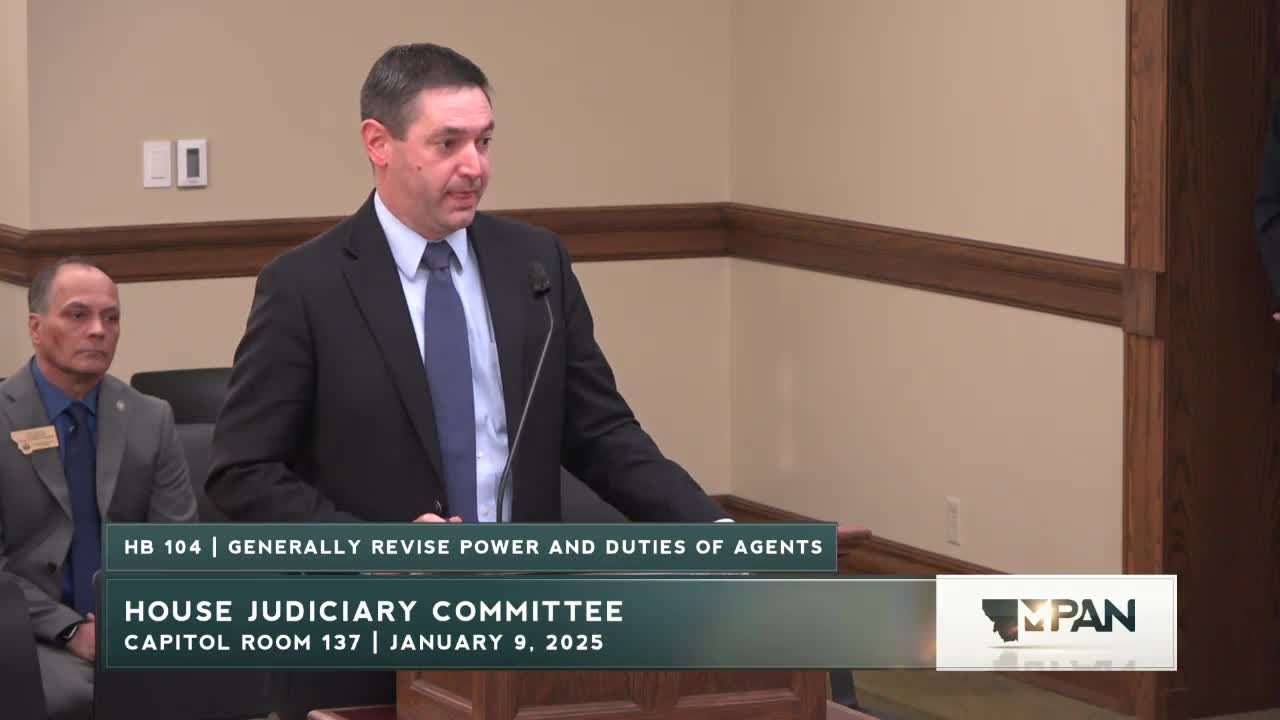Montana lawmakers consider adding gabapentin to controlled substance schedule amid rising abuse
January 09, 2025 | 2025 Legislature MT, Montana
Thanks to Scribe from Workplace AI , all articles about Montana are free for you to enjoy throughout 2025!

This article was created by AI using a video recording of the meeting. It summarizes the key points discussed, but for full details and context, please refer to the video of the full meeting. Link to Full Meeting
House Bill 104, which received support from local law enforcement, aims to address community safety concerns. The bill's sponsor emphasized its importance, noting that it had been vetted by two county sheriffs who endorsed its provisions. This endorsement reflects a collaborative effort between lawmakers and law enforcement to enhance public safety measures.
The more contentious discussion centered around House Bill 41, which proposes adding gabapentin to the controlled substance schedule as a depressant. Representative Curtis Schomer introduced the bill, stating that it is a straightforward response to rising instances of gabapentin abuse in Montana. The bill was requested by the Department of Justice, which has observed an alarming increase in cases involving gabapentin, particularly in driving under the influence (DUI) incidents.
Montana Attorney General Austin Knudson presented compelling data, indicating that advancements in testing technology have revealed a significant uptick in gabapentin-related DUI cases. He noted that post-mortem examinations frequently show high levels of the drug, underscoring its growing prevalence in substance abuse scenarios. This trend raises concerns about public safety and the need for regulatory measures to combat drug misuse.
Support for House Bill 41 came from various law enforcement representatives, including Doug Samuelson from the Montana Highway Patrol, who highlighted the importance of addressing drug-impaired driving. The Montana Police Protective Association also voiced its support, emphasizing the need for proactive measures to protect communities from the dangers of substance abuse.
The discussions during the meeting reflect a broader commitment by Montana lawmakers to tackle pressing public health and safety issues. As the legislative process continues, the outcomes of these bills could significantly impact the state's approach to drug regulation and community safety. The committee's next steps will involve further deliberations and potential voting on these critical measures.
Converted from House Judiciary Jan 9, 2025 meeting on January 09, 2025
Link to Full Meeting
Comments
View full meeting
This article is based on a recent meeting—watch the full video and explore the complete transcript for deeper insights into the discussion.
View full meeting